Athens—an ancient city that thrums with the echoes of millennia. Most travelers flock to its centerpiece, the Acropolis, but few venture beyond its towering pillars to discover the forgotten sanctuaries, theaters, and ruins that whisper of gods, myths, and empires long past. Beneath the city’s vibrant streets, hidden gems lie scattered like the fragments of an old epic, waiting to be explored by those who dare to wander. This is the Athens beyond the Acropolis, where history blends with mystery, and every stone tells a story.
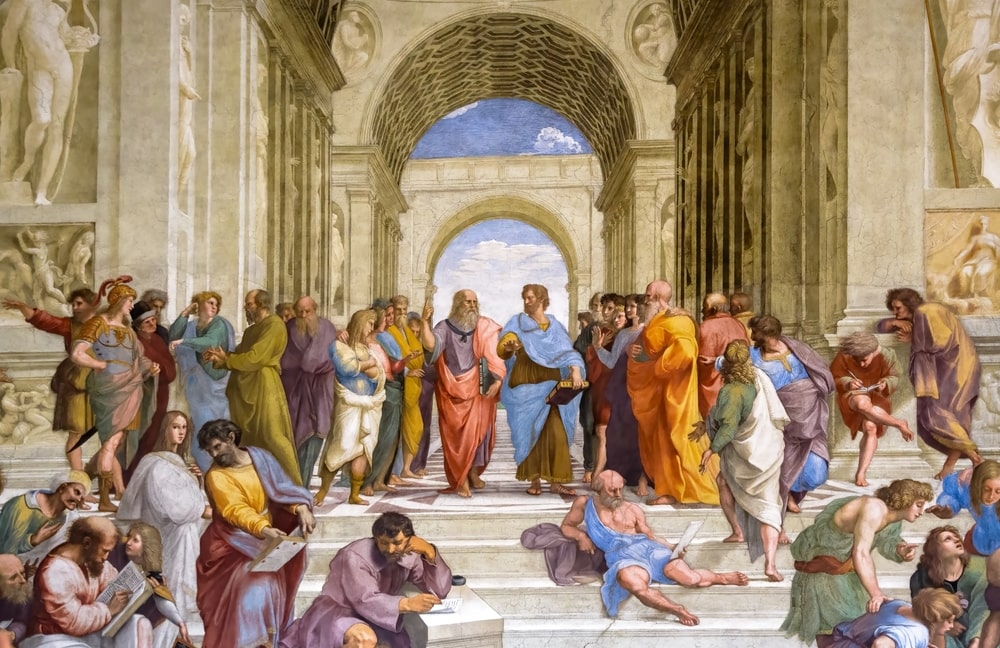
Unearthing Ancient Athens: A Journey Into Lesser-Known Wonders
Beyond the gleaming marbles of the Acropolis, Athens holds secrets—wonders untouched by the throngs of tourists and guarded by time. These ancient sites, often overshadowed by the Parthenon’s grandeur, offer a quieter, more mystical connection to the city’s storied past. They are testaments to a once-great civilization that reached beyond monuments of power and dove deep into spirituality, art, and death.
The Mystique of Athens Beyond the Acropolis: Forgotten Histories and Hidden Gems
Stepping away from the well-worn paths reveals an Athens that feels almost untouched by time. Here, temples dedicated to forgotten gods crumble in silent reverence. Ruins of theaters speak of drama and ecstasy. Graveyards murmur of ancient souls. These places are the true guardians of Athens’ mystical essence, where the past isn’t just preserved—it’s alive.
The Temple of Hephaestus: Athens’ Best-Kept Secret
The God of Fire’s Sanctuary: An Oasis of Calm in the Heart of the City
Tucked away in the ancient Agora, the Temple of Hephaestus is easily missed by those rushing toward the Acropolis. Yet, it stands as one of the best-preserved Greek temples in the world. Dedicated to Hephaestus, the god of fire and blacksmiths, this sanctuary feels worlds apart from the bustle of modern Athens. The columns stand firm, silently holding the weight of history, offering a rare moment of peace in the chaotic rhythm of the city.
Architecture of Divinity: How the Temple of Hephaestus Reflects Athenian Glory
Its Doric columns, perfectly aligned and weathered by centuries, are a reminder of the mathematical precision and divine inspiration that fueled Athenian architecture. Each stone, each line, reflects the craftsmanship of the ancient world, a testament to a time when buildings were raised not just for function, but as tributes to the gods. The temple’s harmony with nature—a design intended to celebrate the divine order of the cosmos—remains a marvel even today.
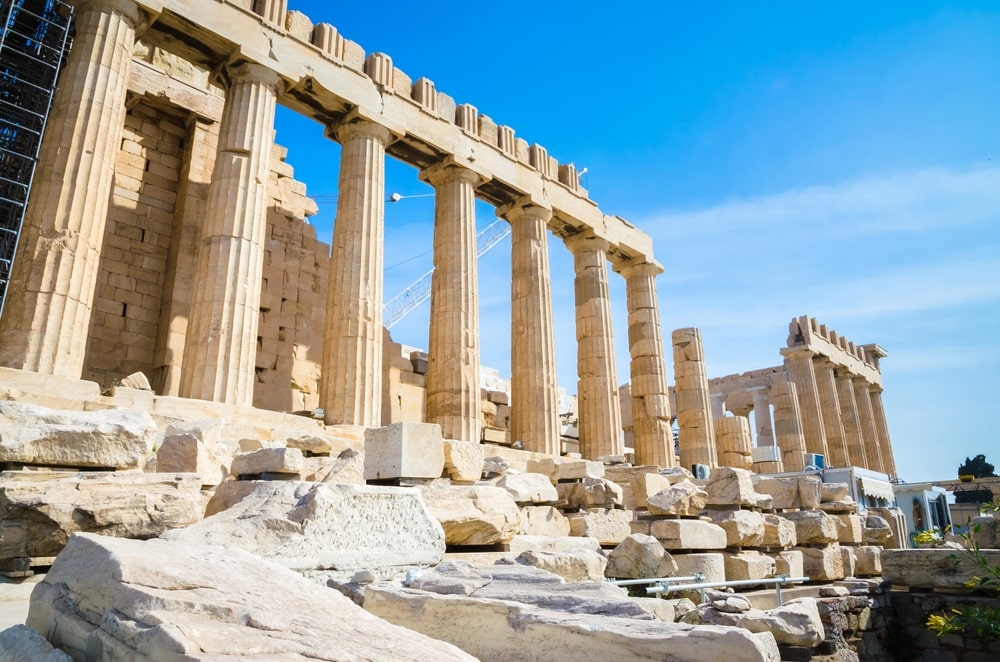
The Theatre of Dionysus: Birthplace of Drama and Tragedy
Where the Masks Came Alive: Echoes of Ancient Performances
Nestled into the southern slope of the Acropolis, the Theatre of Dionysus is where the great playwrights of ancient Greece—Sophocles, Euripides, and Aristophanes—once brought their characters to life. Here, the first tragedies and comedies unfolded, stories of gods, kings, and the fragile nature of humanity, performed beneath the open sky. Though the stage is quiet now, the echoes of those ancient performances still linger in the stone seating, where spectators once sat in rapt attention.
Dionysus’ Legacy: Drama, Ecstasy, and the Origin of Western Theatre
This was not just a theater—it was a temple of catharsis. Dedicated to Dionysus, the god of wine and ecstasy, the performances here were ritualistic, transforming the audience through the power of drama. In the shadows of these ruins, one can still feel the primal energy that fueled the birth of Western theatre, where art was not just entertainment, but a spiritual experience.

Kerameikos: The City of the Dead and Its Eternal Whisper
Silent Guardians: Inside the Sacred Grounds of the Athenian Necropolis
Kerameikos, the ancient cemetery of Athens, is a place where life and death intertwine. Walking through this necropolis feels like stepping into another realm, where the spirits of the past still linger. The tombs, intricately carved with scenes of farewell and mourning, are guarded by statues of sphinxes and lions, watching over the souls of the deceased. It’s a place of silence and reverence, where the air is thick with the weight of eternity.
The Sacred Way: Pathways Leading to Life and Afterlife
The Sacred Way, the road that leads through Kerameikos, was once the route for the great procession during the Eleusinian Mysteries—a journey from life into the mysteries of death and rebirth. Here, every stone speaks of transitions—both physical and spiritual. It’s a reminder that in ancient Athens, death was not an end but a continuation, a passage to another existence.
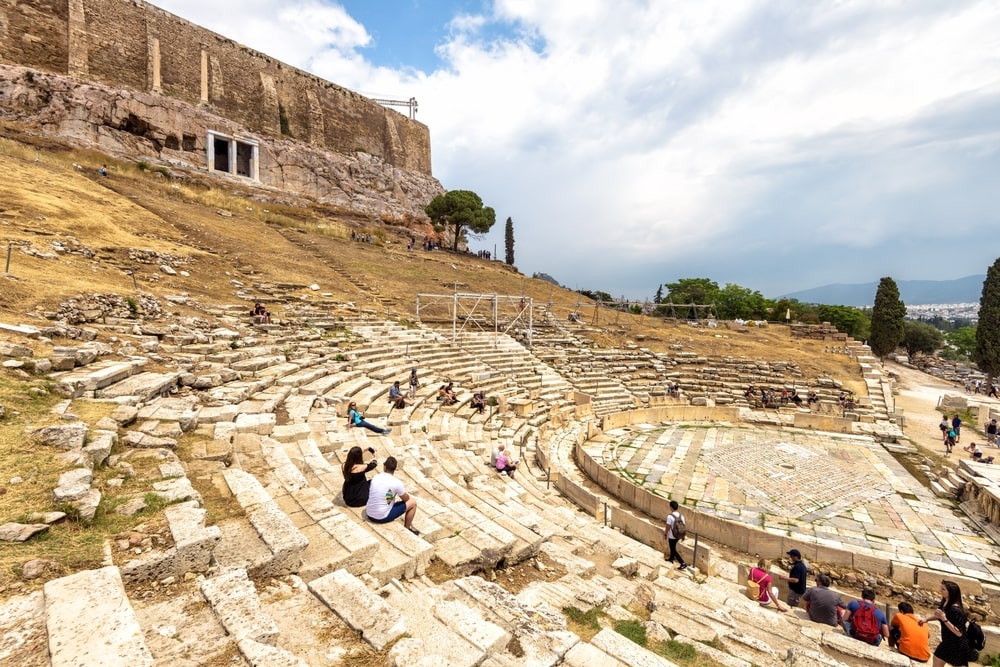
The Tower of the Winds: Athens’ Mysterious Timekeeper
An Ancient Marvel: The Tower That Merged Time and Elements
The Tower of the Winds, an octagonal wonder that rises quietly in the Roman Agora, was more than just a clock. It was a fusion of art, science, and mythology. Designed by the astronomer Andronicus, this tower functioned as a sundial, weather vane, and water clock. Its friezes depict the eight winds, their swirling forms giving life to the elements, as if they themselves controlled the passage of time. This ancient timekeeper was a symbol of Athens’ intellectual mastery, a blending of science and the divine.
Winds of Change: How This Structure Guided Athenian Life and Rituals
For the Athenians, the Tower of the Winds was not just a practical tool—it was a sacred guide. The winds determined everything, from the timing of religious festivals to the success of sea voyages. This tower, merging time and the elements, was a tangible connection between the heavens and the earth, a structure that shaped the rhythm of daily Athenian life.
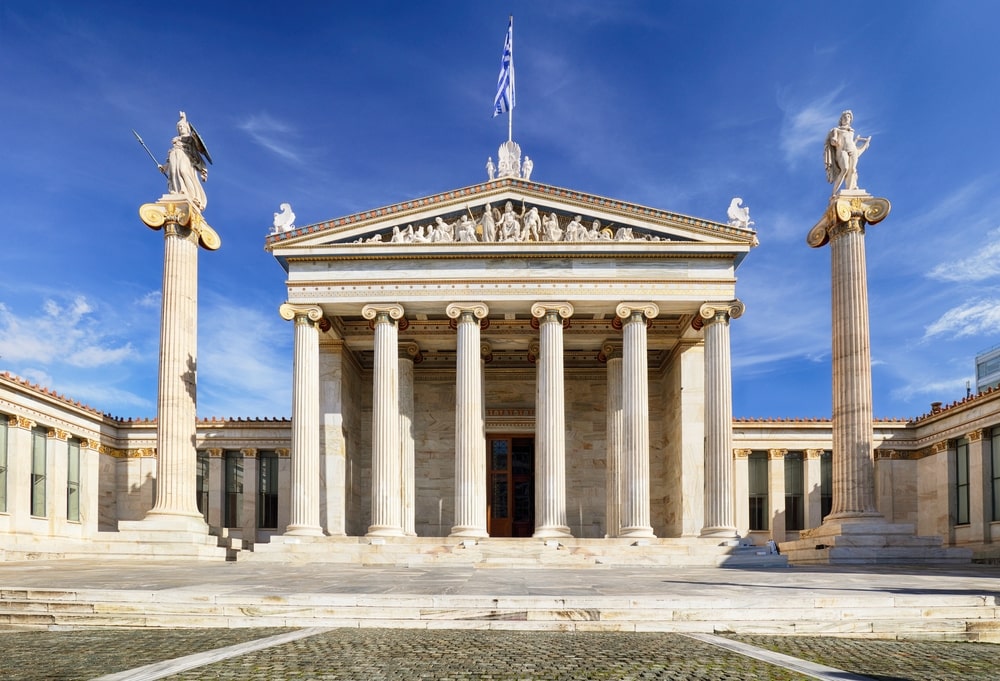
The Roman Agora: A Glimpse into Athens Under Roman Rule
A Fusion of Cultures: How the Roman Agora Redefined Athens
When the Romans took control of Athens, they left their mark, transforming the city into a melting pot of cultures. The Roman Agora, with its open space and grand columns, symbolized this new era—a blend of Roman and Greek traditions. While it lacks the intricate beauty of classical Athenian structures, the Agora speaks of a city in transition, adapting yet retaining its essence.
The Gate of Athena Archegetis: Guardian of the City’s Changing Faces
At the entrance to the Agora stands the Gate of Athena Archegetis, a reminder of Athens’ enduring connection to its patron goddess. Even as the city evolved under Roman rule, Athena remained its protector, her presence woven into the fabric of the city. The gate, though weathered by time, still stands as a sentinel, guarding the spirit of ancient Athens through every transformation.
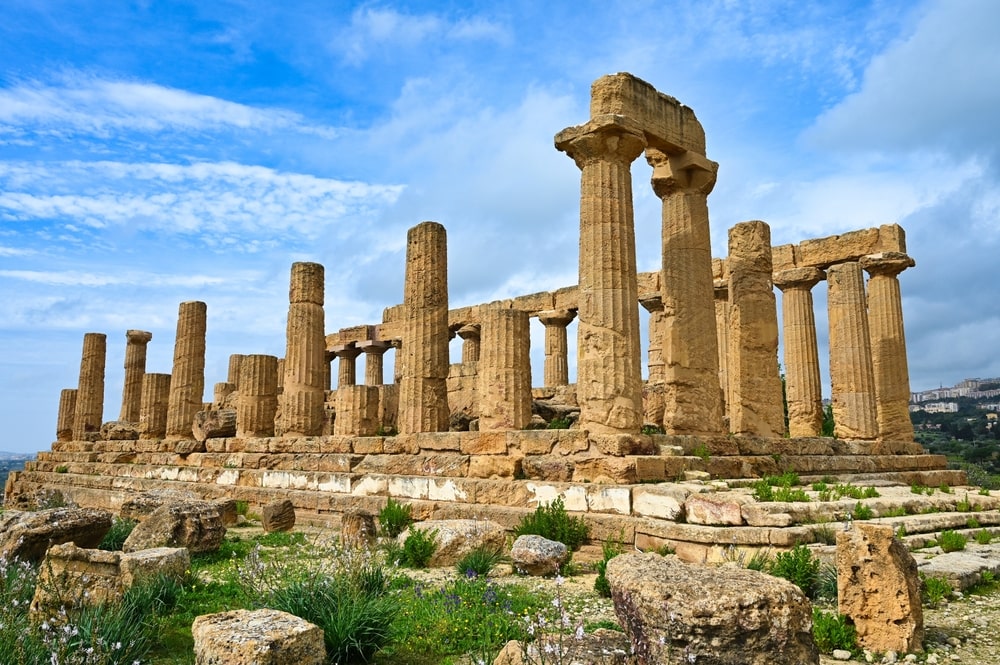
The Olympieion: Zeus’ Towering Temple of Ambition
The Colossus That Never Was: Dreams of an Eternal Olympian Monument
The Temple of Olympian Zeus, or the Olympieion, was meant to be a monument to the might of the gods—an ambition to rival even the Parthenon. Yet, it was never truly completed. What remains are towering columns, rising like the ghosts of an empire that dreamed too big. This colossal structure speaks of Athenian ambition, of the desire to connect with the divine on a scale never before imagined.
Ruins of Grandeur: Why the Temple of Zeus Remains a Symbol of Athens’ Aspirations
Though incomplete, the Olympieion still evokes a sense of grandeur. Its sheer scale and the ambition behind it serve as a reminder of Athens’ relentless pursuit of excellence, of its constant striving toward the divine. The ruins, standing against the backdrop of the modern city, are a symbol of human aspiration—both its triumphs and its limitations.
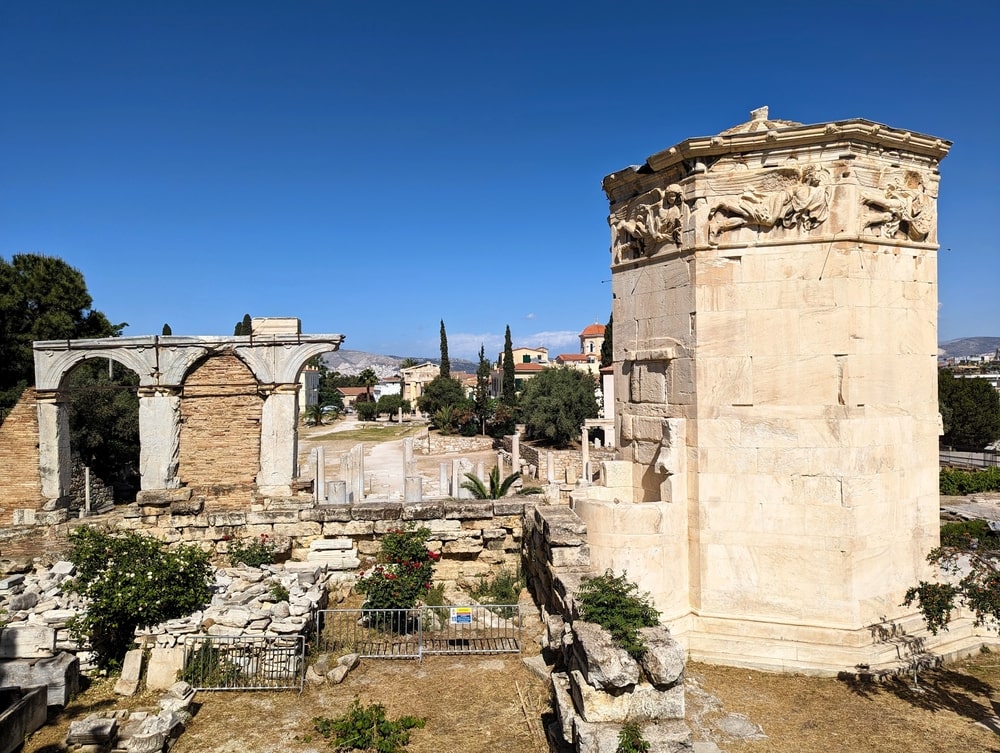
The Hill of the Nymphs: A Sacred Spot Overlooking the City
Where the Divine Met the Mortal: Myths of the Nymphs and Sacred Hills
Perched above the city, the Hill of the Nymphs offers more than just a panoramic view of Athens. It was once a place of worship, where the divine and the mortal intersected. Myths tell of nymphs—spirits of nature—who inhabited these hills, and the ancient Athenians believed that sacred rituals performed here could bring them closer to these elusive beings.
An Overlook of Legends: The Spiritual Significance of the Hill Through the Ages
For centuries, the Hill of the Nymphs has remained a place of spiritual significance. From the ancient rites dedicated to the nymphs to its later use as a site for astronomy, this hill has always been a place where the heavens and the earth meet. Even today, standing atop this hill, it’s impossible not to feel the weight of the legends that still linger in the air.
Eleusis: The Secretive Sanctuary of the Mysteries
Shrouded in Secrecy: The Rites of Demeter and Persephone in Eleusis
Eleusis, a short distance from Athens, was home to the Eleusinian Mysteries—secretive religious rites that promised initiates a glimpse into the mysteries of life, death, and rebirth. Dedicated to Demeter and Persephone, the rituals performed here were shrouded in secrecy, known only to those who participated. Even today, the exact nature of these rites remains unknown, adding to the allure of this ancient sanctuary.
The Ancient Pilgrimage: A Path That Unveiled Life, Death, and Rebirth
Every year, Athenians would make the pilgrimage to Eleusis, walking the Sacred Way to take part in the mysteries. It was a journey that symbolized the soul’s passage through life, death, and rebirth, mirroring the cycle of the seasons. Today, Eleusis stands as a testament to the power of ritual, a place where the ancient Athenians sought to uncover the truths of existence itself.
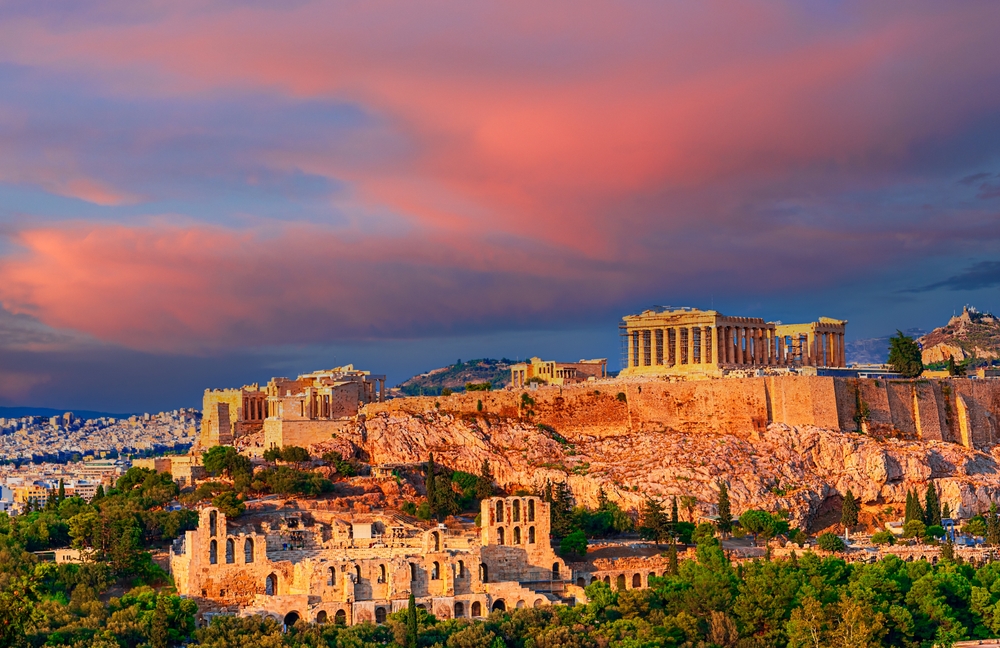
Exploring Athens Beyond the Mainstream
Why These Ruins Matter Today: A Call to Rediscover Athens’ Hidden Treasures
The lesser-known ruins of Athens are more than just remnants of the past—they are living connections to the city’s rich history and spirituality. As modernity threatens to overshadow these sites, it becomes all the more important to seek them out, to remember that Athens is more than just its famous monuments. These hidden treasures remind us of the city’s depth and complexity, of its unbroken connection to the divine, the artistic, and the eternal.
The Timeless Allure of Athens: Ancient Mysticism Meeting Modern Curiosity
Athens remains timeless because it allows the modern soul to reach back into antiquity. The ruins beyond the Acropolis are where the past meets the present, where ancient mysticism invites modern curiosity. These sites offer an invitation to explore not just a city, but the very essence of human history and belief.
Conclusion
Beyond the Acropolis: Athens as an Eternal Playground for the Mind and Spirit
Athens is an eternal city, where the past is never truly past. Beyond the Acropolis lies a playground for the mind and spirit, where every ruin invites contemplation, every stone whispers an ancient truth. To walk among these sites is to step into the flow of history itself, to feel the weight of ages pressing gently against the present.
An Invitation to Explore: The Journey Into Athens’ Forgotten Ruins Awaits
For those who seek to go beyond the surface, Athens offers an adventure into the mystical, the forgotten, and the divine. The journey awaits—one only needs to take the first step into the unknown, where the ruins of an ancient world still hold their secrets, waiting to be discovered.
